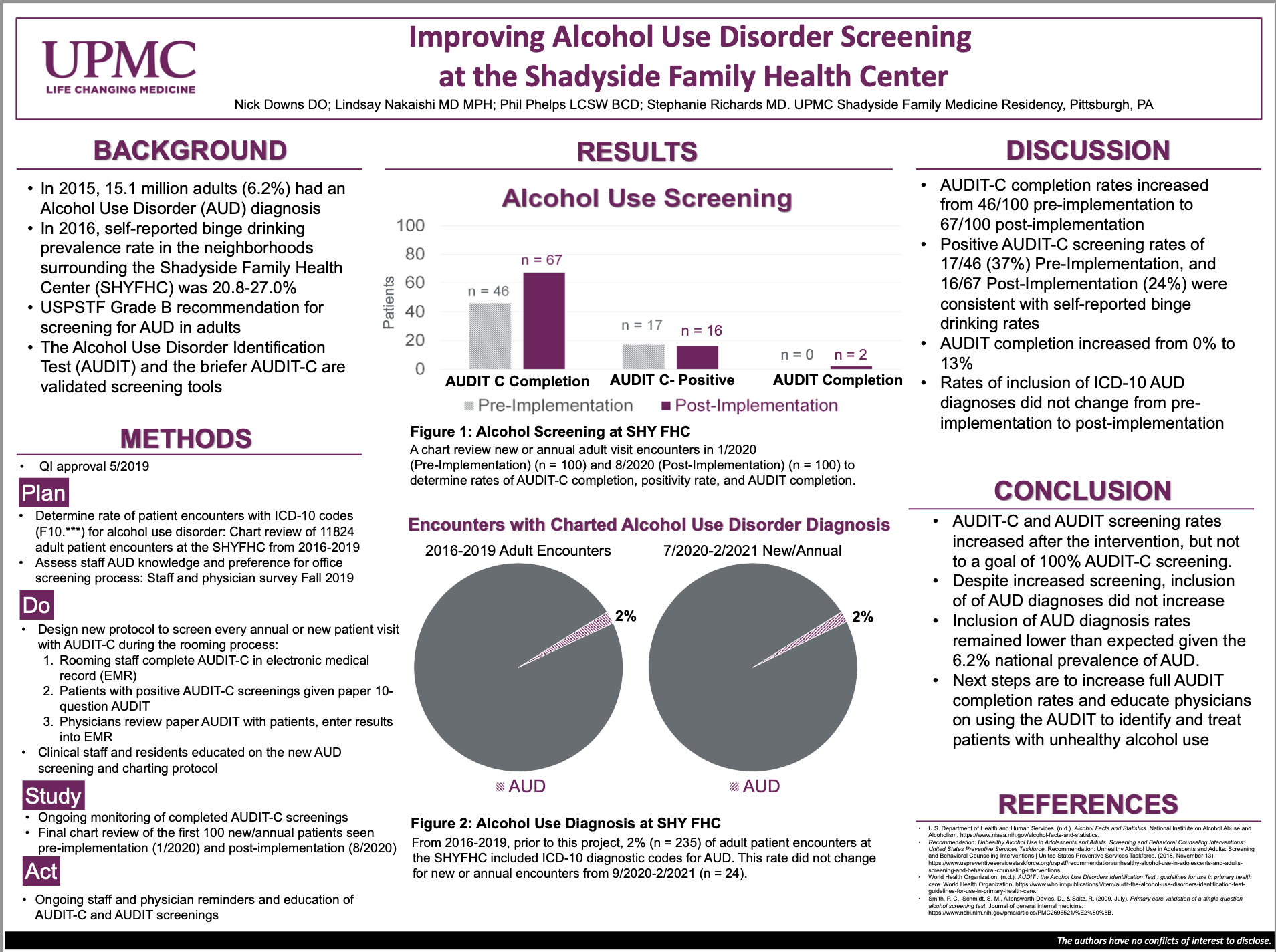Title: Improving Alcohol Use Disorder Screening at the Shadyside Family Health Center (SFHC)
Authors: Nicholas Downs, DO; Lindsay Nakaishi, MD, MPH; Phillip Phelps, LCSW, BCD; Stephanie Richards, MD
Background:
In 2015, 15.1 million adults (6.2% of population) had an Alcohol Use Disorder (AUD) diagnosis. There is a United States Preventive Services Task Force (USPSTF) Grade B recommendation for screening for AUD in adults. The Alcohol Use Disorder Identification Test (AUDIT) and the briefer AUDIT-C are validated screening tools. In 2016, the estimated binge drinking prevalence rates in the Pittsburgh Shadyside Family Health Center (SFHC) area was 20.8-27.0%. Prior to this project, the SFHC did not have a standardized AUD screening process.
Methods:
In Fall 2019, physician and clinical staff were surveyed to assess AUD knowledge and preference for an office screening process. This informed a new protocol to screen every annual or new patient visit with AUDIT-C in the electronic medical record. Positive AUDIT-C screens found during the rooming process triggered staff to give patients a full AUDIT to be completed on paper. In February 2020, the clinical staff were educated on the new AUD screening and charting protocol. A resident didactic session on April 1, 2020, focused on AUD diagnosis, effective management and proper use of the AUDIT tool. An electronic chart review was conducted of the first 100 new/annual patients seen pre-implementation (January 2020) and post-implementation (August 2020).
Results:
AUDIT-C completion rates increased from 46/100 pre-implementation to 67/100 post-implementation and AUDIT completion increased from 0/100 to 13/100. In the period 2016-2019 (pre-implementation), 2% of patient visits (n = 279) had ICD-10 codes for AUD, which remained similar (2%, n = 30) in the six-month period after implementation (September 2020-2021).
Conclusion:
AUDIT-C and AUDIT screening rates increased after the intervention. Despite increased screening, inclusion of ICD-10 codes for AUD did not increase and rates remained lower than expected. Next steps include increasing full AUDIT completion rates and educating physicians how to use the AUDIT as a tool to determine if a patient has an AUD or unhealthy alcohol use.

